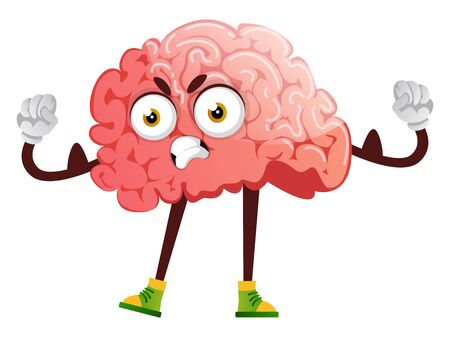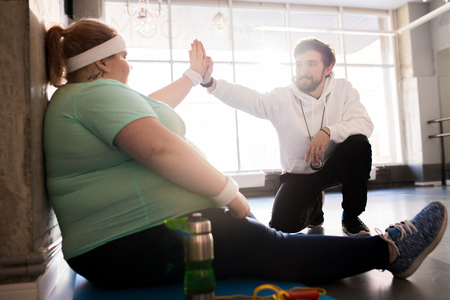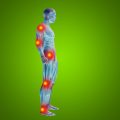1. Introduction: The Current Landscape of Stroke Rehabilitation in America
Stroke remains one of the leading causes of long-term disability in the United States. Every year, nearly 800,000 Americans experience a stroke, and about 610,000 of these are first-time or new strokes. This high incidence places a significant burden on individuals, families, and the entire American healthcare system. Understanding the scope of stroke and how rehabilitation is delivered can help us see where research and future trends might lead.
Overview of Stroke in the United States
Strokes can happen to anyone at any time, but certain risk factors—like high blood pressure, smoking, diabetes, and obesity—are especially common in the U.S. population. With an aging population, the number of Americans living with stroke-related disabilities is expected to rise in coming years.
Key Stroke Statistics in the United States
| Statistic | Details |
|---|---|
| Annual Stroke Cases | Nearly 800,000 per year |
| Leading Cause of Disability | #1 cause of long-term disability |
| Healthcare Costs | $56 billion annually (direct and indirect) |
| Prevalence by Age Group | Higher risk over age 65 |
| Common Risk Factors | High blood pressure, smoking, diabetes, obesity |
The Burden on American Healthcare Systems
The aftermath of a stroke often means weeks or months in hospitals and rehabilitation centers, followed by ongoing outpatient therapy. This puts pressure not only on patients and their families but also on hospitals, insurance companies, and community resources. Healthcare teams must coordinate physical therapists, occupational therapists, speech-language pathologists, social workers, nurses, and doctors to help each patient regain as much independence as possible.
Established Rehabilitation Protocols in America
The standard approach to stroke rehabilitation in America focuses on individualized care plans that start as soon as possible after a stroke. Here’s a snapshot of what this typically looks like:
| Rehabilitation Stage | Main Focus Areas |
|---|---|
| Acute Phase (Hospital) | Medical stabilization, early mobility, prevention of complications |
| Inpatient Rehab Facility (IRF) | Intensive physical therapy (PT), occupational therapy (OT), speech therapy; daily goal setting; family education |
| Outpatient/Home-Based Rehab | Continued PT/OT/speech therapy; community reintegration; vocational training if needed; support groups; adaptive equipment assessment |
| Long-Term Management | Lifestyle modification support; secondary prevention education; regular follow-up with rehab team |
A Team Approach to Recovery
No two stroke survivors have exactly the same needs. That’s why American rehabilitation programs emphasize a personalized approach and teamwork across different specialties. Families are encouraged to participate actively in recovery planning and therapy sessions to ensure better outcomes.
2. Innovative Research in Stroke Recovery
Exploring the Latest Breakthroughs in American Stroke Rehabilitation
In recent years, stroke recovery research in the United States has made impressive progress. Scientists and clinicians are working hard to better understand how the brain heals and to develop new treatments that help people recover faster and more fully. Below, we’ll look at some of the key advancements shaping the future of neurological rehabilitation.
Understanding Neuroplasticity: The Brain’s Power to Heal
One of the most exciting areas in stroke recovery research is neuroplasticity—the brains ability to reorganize itself by forming new neural connections. American researchers are studying how different therapies can boost neuroplasticity, giving patients better chances of regaining lost skills. For example, high-intensity therapy, repetitive practice, and even virtual reality games are being tested to encourage the brain to rewire itself after a stroke.
New Therapeutic Approaches: Beyond Traditional Rehab
Stroke rehabilitation is no longer limited to physical and occupational therapy. Innovative interventions are now being developed and tested across the U.S., including:
| Therapy Type | Description | Potential Benefits |
|---|---|---|
| Robotic-Assisted Therapy | Uses robots to help guide arm or leg movements during exercises | Improved strength, motivation, and consistency in practice |
| Non-Invasive Brain Stimulation (NIBS) | Applies mild electrical currents to the scalp to activate specific brain areas | Enhanced motor recovery, especially for those with severe weakness |
| Tele-rehabilitation | Delivers therapy remotely using video calls and digital platforms | Greater access for rural or mobility-limited patients |
| Cognitive-Behavioral Therapy (CBT) | Mental health support integrated into stroke rehab plans | Better mood, motivation, and engagement in recovery activities |
Diversity-Focused Clinical Trials: Personalizing Stroke Recovery
A growing trend in American research is tailoring treatments for diverse populations. Clinical trials now actively include participants from different ethnic backgrounds, ages, genders, and lifestyles to make sure therapies work for everyone. This focus on diversity helps address health disparities and ensures that new therapies are effective for all Americans who have experienced a stroke.
The Bottom Line on Current Research Directions
American scientists are leading the way in exploring how advanced technology, personalized medicine, and a better understanding of brain healing can help people recover from strokes more successfully than ever before.

3. Technology and Digital Health in Neurorehabilitation
Telehealth: Bringing Stroke Recovery Home
Telehealth is changing the way Americans recover from stroke. With virtual appointments, stroke survivors can now connect with their therapists from the comfort of home. This is especially helpful for people living in rural areas or those with limited mobility. Therapists use video calls to guide exercises, check on progress, and answer questions, making therapy more accessible than ever before.
Robotics: High-Tech Help for Movement
Robotic devices are becoming a common sight in rehabilitation centers across the U.S. These machines help patients relearn movements by guiding arms or legs through specific exercises. Robotics provide consistent support and can adjust to each person’s needs, helping them regain strength and coordination faster.
| Technology | Main Benefit | Common Uses |
|---|---|---|
| Telehealth | Convenient access to therapists at home | Virtual consultations, exercise guidance |
| Robotics | Precise, repetitive movement training | Arm/leg mobility, walking practice |
| Virtual Reality (VR) | Engaging and motivating therapy sessions | Balance training, cognitive exercises |
| Mobile Health Apps | Track progress and stay connected with care teams | Exercise reminders, symptom logging |
Virtual Reality: Making Therapy Fun and Interactive
Virtual reality (VR) is turning stroke rehab into an engaging experience. Patients put on VR headsets and enter digital environments where they can practice real-life skills, play games that improve balance or memory, and challenge themselves in new ways. Many American clinics are using VR to keep therapy interesting and boost motivation.
Mobile Health Apps: Your Recovery Partner in Your Pocket
Smartphones are playing a bigger role in stroke recovery thanks to mobile health apps. These apps remind users to do exercises, track their progress, and allow them to share updates with their healthcare team. Some apps even offer personalized exercise videos or connect patients with online support groups, making it easier to stick with therapy between clinic visits.
The American Experience: Widespread Adoption and Challenges
The integration of these technologies is growing rapidly across the U.S., supported by insurance changes and increasing awareness of digital health benefits. However, there are still challenges such as internet access gaps in some communities and the need for ongoing training for both patients and professionals. Overall, technology is opening new doors for stroke survivors to achieve better outcomes on their road to recovery.
4. Cultural and Socioeconomic Factors Shaping Rehabilitation
Understanding the American Context in Stroke Recovery
Stroke rehabilitation in the United States is influenced by more than just medical advances—it’s shaped by American cultural values, economic factors, and community support systems. These elements play a crucial role in determining who gets access to care, the quality of that care, and overall patient outcomes. Let’s explore how these unique aspects of American life impact neurological rehabilitation.
The Role of Health Insurance
In the U.S., health insurance coverage is often tied to employment or government programs like Medicare and Medicaid. This can create barriers for some patients, especially those who are uninsured or underinsured. The type of insurance coverage directly affects what services are available, how long patients can stay in rehab, and which specialists they can see.
| Insurance Type | Access to Rehab Services | Common Limitations |
|---|---|---|
| Private Insurance | Broad network of facilities; quicker access | High out-of-pocket costs; coverage limits |
| Medicare/Medicaid | Covers most standard rehab needs | Limited choices; strict approval processes |
| No Insurance | Very limited access; relies on charity care/community clinics | Long wait times; fewer options for advanced therapies |
Cultural Values and Family Involvement
American culture often emphasizes independence and self-reliance. After a stroke, this can motivate patients to work hard in therapy but may also make it harder for them to accept help. Family involvement varies—some families provide strong support, while others struggle due to distance or work commitments.
Key Cultural Considerations:
- Self-Advocacy: Patients are encouraged to speak up about their needs and goals in rehab settings.
- Diversity: The U.S. is home to many cultures, so language and customs can influence communication between providers and patients.
- Privacy: Respect for patient privacy may affect family participation in care decisions.
The Impact of Community Resources
The availability of local resources—such as support groups, transportation services, and accessible housing—can greatly improve recovery outcomes. However, there are significant differences between urban and rural communities.
| Community Type | Available Resources | Main Challenges |
|---|---|---|
| Urban Areas | Larger hospitals; more specialized clinics; diverse support groups | Crowded facilities; higher costs; transportation barriers within cities |
| Rural Areas | Closer-knit community support; some telehealth options emerging | Fewer specialists; long travel distances; less technology access |
Tackling Disparities in Care
Inequities exist across socioeconomic lines. Lower-income individuals or those from minority backgrounds may face additional obstacles such as language barriers, lack of insurance, or limited awareness of available services. Innovative outreach programs and telemedicine solutions are starting to bridge some of these gaps but much work remains.
Summary Table: Key Influences on Neurological Rehabilitation Access in America
| Factor | Description/Impact on Rehab Access & Outcomes |
|---|---|
| Cultural Values (e.g., independence) | Affects willingness to seek/accept help; shapes therapy goals and expectations. |
| Health Insurance Status | Determines service availability, duration, and affordability of rehabilitation. |
| Community Resources & Location | Differing levels of rehab support depending on urban/rural setting. |
| Sociodemographic Differences (income, education) | Create disparities in access, knowledge about rehab options, and outcomes. |
| Diversity & Language Barriers | Affect communication with healthcare teams and understanding of treatment plans. |
This complex mix of cultural beliefs, insurance realities, and community resources means that stroke recovery journeys are highly individualized across America. Addressing these factors is key for making future neurological rehabilitation more equitable and effective for all Americans.
5. Future Directions and Emerging Trends
Personalized Medicine: Tailoring Recovery to the Individual
American stroke recovery is moving toward more personalized care, where each patient’s treatment plan is shaped by their unique genetics, lifestyle, and recovery goals. Instead of one-size-fits-all therapies, doctors are using advanced diagnostics and genetic testing to customize rehabilitation strategies. This approach helps patients recover faster and improves their quality of life.
How Personalized Medicine Impacts Stroke Recovery
| Personalized Approach | Traditional Approach |
|---|---|
| Treatment based on patient’s genetics and specific needs | Standardized protocols for all patients |
| Flexible therapy plans that adapt as the patient improves | Fixed therapy schedules regardless of progress |
| Focus on individual goals (e.g., walking, speaking, daily tasks) | General focus on basic function improvement |
AI-Driven Interventions: Smarter Rehabilitation Tools
Artificial intelligence (AI) is changing how therapists and doctors help stroke survivors. AI-driven apps and wearable devices can track a patient’s progress in real time, provide feedback, and adjust exercises automatically. Virtual reality and robotics are also making therapy sessions more engaging and effective, helping patients stay motivated throughout the recovery process.
Examples of AI in Neurological Rehabilitation
- Wearable Sensors: Monitor movement and send data to therapists for better treatment adjustments.
- Virtual Reality Training: Simulates real-life activities to help patients practice skills in a safe environment.
- Smartphone Apps: Guide patients through exercises at home with reminders and progress tracking.
Policy Changes: Shaping the Future of Stroke Recovery
The U.S. healthcare system is evolving to support better outcomes for stroke survivors. New policies aim to make neurological rehabilitation more accessible and affordable for everyone. Insurance coverage is expanding to include newer therapies, while federal programs promote early intervention and community-based care. These changes help ensure that people from all backgrounds receive high-quality stroke rehabilitation services.
Main Policy Trends Impacting Stroke Rehabilitation
| Trend | Description | Impact on Patients |
|---|---|---|
| Expanded Insurance Coverage | Covers innovative rehab technologies and longer therapy sessions | Easier access to advanced treatments without financial burden |
| Telehealth Expansion | Makes virtual rehab sessions available across states and rural areas | More convenient care options for those with limited mobility or transportation |
| Community-Based Programs | Local organizations offer support groups, education, and exercise classes | Smoother transition from hospital to home; ongoing motivation for recovery |
The future of American stroke recovery is bright, thanks to new technology, personalized approaches, and supportive policy changes. As these trends continue to evolve, stroke survivors can look forward to even better outcomes and a higher quality of life.


